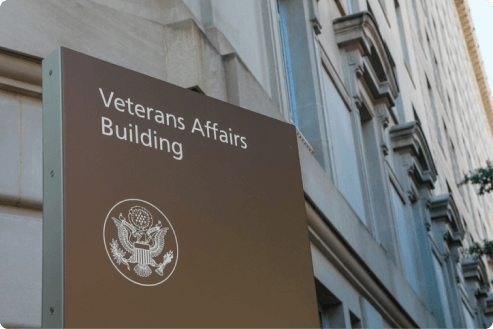Access Free VA Claims Assistance

Free Cancer Guide for Veterans

Find a Top Mesothelioma Doctor

Dependency and indemnity compensation (DIC) is a type of VA benefit available to family members of veterans who died from a service-related illness or injury. Asbestos-related diseases such as mesothelioma may qualify as service-related if the veteran was exposed while serving in the military.

The VA increases DIC rates every December. They do this to provide adequate compensation to surviving dependents of veterans. The current rate was updated on Dec. 1, 2023, and the rate will remain in effect for a full year.
The VA pays the tax-free financial benefit every month. The benefit is increased for surviving spouses eligible for VA Aid and Attendance or Housebound benefits. Surviving spouses with children under age 18 also receive increased benefits.
Current DIC rates are $1,612.75 per month for surviving spouses. More monthly compensation under certain circumstances is available for those who qualify:
To get the full DIC benefits, reach out to an accredited VA claims agent. They can help ensure access to the full amount of compensation you are entitled to receive.
Veterans discharged “under conditions other than dishonorable” have a right to survivor benefits.
Military asbestos exposure causes many veterans to develop mesothelioma or lung cancer after retirement. In 2022, the VA updated eligibility guidelines and considered both of these cancers 100% disabling.
Veterans with asbestos-related cancer are entitled to VA disability benefits if they prove their asbestos exposure happened primarily during their military service. The same standard applies to family members applying for dependency and indemnity compensation.
Filing a DIC claim is relatively straightforward if the veteran was already receiving VA disability compensation for the asbestos disease that killed them. Otherwise, the surviving spouse must include documentation of the diagnosis and evidence linking it primarily to military asbestos exposure.
The DIC claim must include medical records of the veteran’s diagnosis and treatment. The VA will also need to see a medical nexus letter from a doctor. This letter explains how asbestos exposure caused the veteran’s illness.
The DIC claim must include the veteran’s discharge paperwork to verify their military service. The claimant must also submit an asbestos exposure summary. This letter explains how the veteran was exposed to asbestos while they were on active duty.
The DIC claim documents must prove that at least 50% of the asbestos exposure occurred during the veteran’s military service. Without evidence of this, the VA will assume exposure that happened during the veteran’s civilian life caused the asbestos-related illness.
If the veteran already had an asbestos disability claim approved, it should not be necessary to submit proof of military asbestos exposure again.
Access Free VA Claims Assistance

Free Cancer Guide for Veterans

Find a Top Mesothelioma Doctor

VA claim paperwork is complex, and proving military asbestos exposure after a veteran dies can be especially challenging. Working with an accredited claims agent familiar with asbestos-related diseases can make the process of filing a VA claim easier.
Surviving family members can explore other options for receiving compensation as well. The family may be able to file a wrongful death lawsuit against the company that supplied the asbestos-containing products.
Recommended ReadingYour web browser is no longer supported by Microsoft. Update your browser for more security, speed and compatibility.
If you are looking for mesothelioma support, please contact our Patient Advocates at (855) 404-4592
The Mesothelioma Center at Asbestos.com has provided patients and their loved ones the most updated and reliable information on mesothelioma and asbestos exposure since 2006.
Our team of Patient Advocates includes a medical doctor, a registered nurse, health services administrators, veterans, VA-accredited Claims Agents, an oncology patient navigator and hospice care expert. Their combined expertise means we help any mesothelioma patient or loved one through every step of their cancer journey.
More than 30 contributors, including mesothelioma doctors, survivors, health care professionals and other experts, have peer-reviewed our website and written unique research-driven articles to ensure you get the highest-quality medical and health information.
My family has only the highest compliment for the assistance and support that we received from The Mesothelioma Center. This is a staff of compassionate and knowledgeable individuals who respect what your family is experiencing and who go the extra mile to make an unfortunate diagnosis less stressful. Information and assistance were provided by The Mesothelioma Center at no cost to our family.LashawnMesothelioma patient’s daughter


Munz, A. (2024, August 9). Dependency and Indemnity Compensation (DIC) Claim. Asbestos.com. Retrieved July 2, 2025, from https://www.asbestos.com/veterans/va-claims/dependency-indemnity-compensation/
Munz, Aaron. "Dependency and Indemnity Compensation (DIC) Claim." Asbestos.com, 9 Aug 2024, https://www.asbestos.com/veterans/va-claims/dependency-indemnity-compensation/.
Munz, Aaron. "Dependency and Indemnity Compensation (DIC) Claim." Asbestos.com. Last modified August 9, 2024. https://www.asbestos.com/veterans/va-claims/dependency-indemnity-compensation/.
Former U.S. Army Capt. Aaron Munz is the director of the Veterans Department at The Mesothelioma Center, and he is a VA-accredited Claims Agent. He received the Bronze Star in 2004 during Operation Iraqi Freedom. Munz has intimate knowledge of how veterans were exposed to asbestos because he served under similar conditions.
Our fact-checking process begins with a thorough review of all sources to ensure they are high quality. Then we cross-check the facts with original medical or scientific reports published by those sources, or we validate the facts with reputable news organizations, medical and scientific experts and other health experts. Each page includes all sources for full transparency.
Please read our editorial guidelines to learn more about our content creation and review process.
